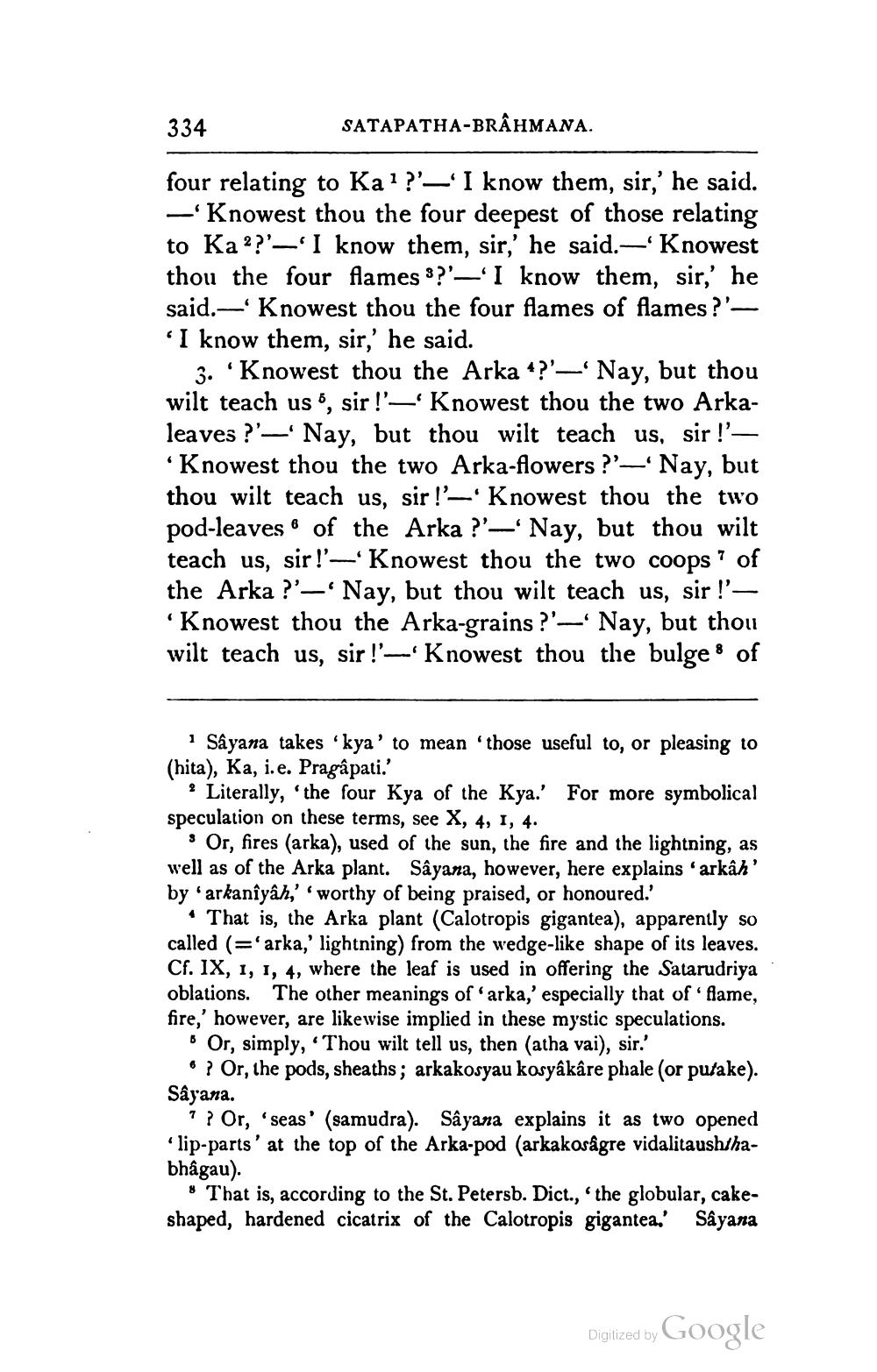________________
SATAPATHA-BRAHMANA.
334
four relating to Ka1?'-'I know them, sir,' he said. -'Knowest thou the four deepest of those relating to Ka?' I know them, sir,' he said.-' Knowest thou the four flames ?'-'I know them, sir,' he said. Knowest thou the four flames of flames?''I know them, sir,' he said.
3. 'Knowest thou the Arka ?'-' Nay, but thou wilt teach us, sir!'-' Knowest thou the two Arkaleaves?'' Nay, but thou wilt teach us, sir !'— 'Knowest thou the two Arka-flowers?'' Nay, but thou wilt teach us, sir!'-' Knowest thou the two pod-leaves of the Arka ?'-' Nay, but thou wilt teach us, sir!'-'Knowest thou the two coops' of the Arka?'' Nay, but thou wilt teach us, sir !'— 'Knowest thou the Arka-grains?'-' Nay, but thou wilt teach us, sir!'-' Knowest thou the bulge of
6
8
1
Sâyana takes 'kya' to mean 'those useful to, or pleasing to (hita), Ka, i.e. Pragâpati.'
Literally, the four Kya of the Kya.' For more symbolical speculation on these terms, see X, 4, 1, 4.
Or, fires (arka), used of the sun, the fire and the lightning, as well as of the Arka plant. Sâyana, however, here explains 'arkâh' by 'arkanîyâh,' 'worthy of being praised, or honoured.'
That is, the Arka plant (Calotropis gigantea), apparently so called (='arka,' lightning) from the wedge-like shape of its leaves. Cf. IX, 1, 1, 4, where the leaf is used in offering the Satarudriya oblations. The other meanings of 'arka,' especially that of 'flame, fire,' however, are likewise implied in these mystic speculations.
Or, simply, 'Thou wilt tell us, then (atha vai), sir.'
? Or, the pods, sheaths; arkakosyau kosyâkâre phale (or putake). Sâyana.
7? Or, 'seas' (samudra). Sâyana explains it as two opened 'lip-parts' at the top of the Arka-pod (arkakosâgre vidalitaush/habhagau).
"That is, according to the St. Petersb. Dict., 'the globular, cakeshaped, hardened cicatrix of the Calotropis gigantea.' Sâyana
Digitized by
Google




